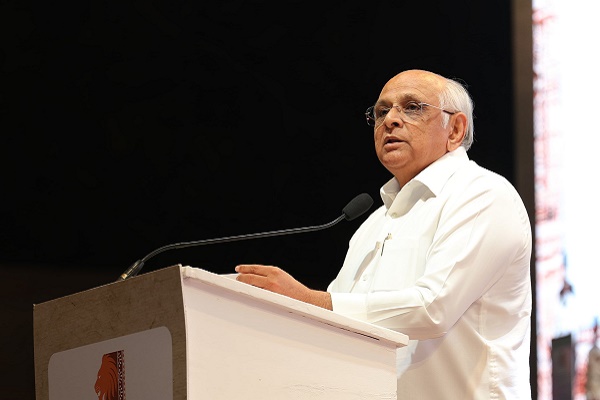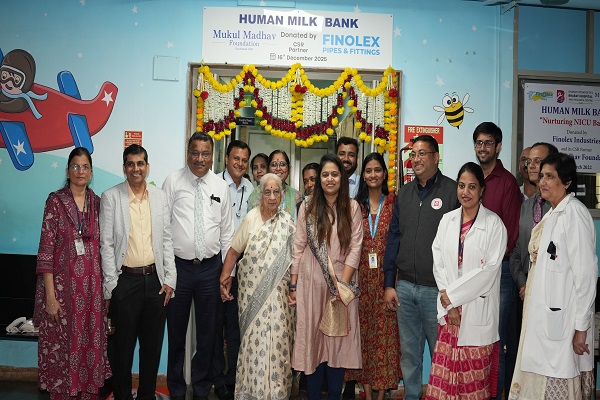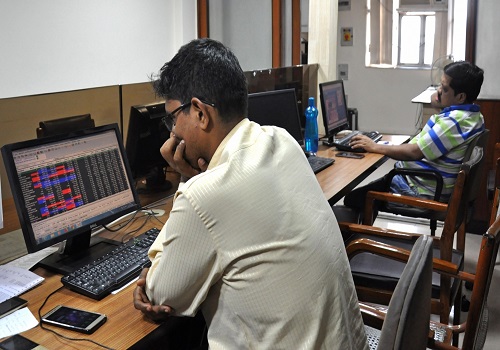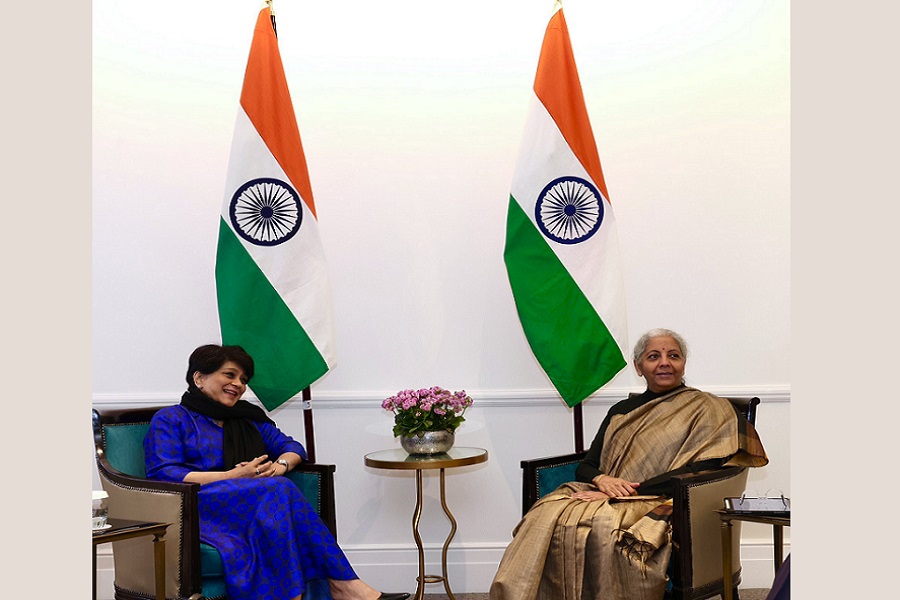Sai Life Sciences coming with IPO to raise upto Rs 3091.76 crore

Sai Life Sciences
- Sai Life Sciences is coming out with a 100% book building; initial public offering (IPO) of 5,63,16,167 shares of Rs 1 each in a price band Rs 522-549 per equity share.
- Not more than 50% of the issue will be allocated to Qualified Institutional Buyers (QIBs), including 5% to the mutual funds. Further, not less than 15% of the issue will be available for the non-institutional bidders and the remaining 35% for the retail investors.
- The issue will open for subscription on December 11, 2024 and will close on December 13, 2024.
- The shares will be listed on BSE as well as NSE.
- The face value of the share is Rs 1 and is priced 522 times of its face value on the lower side and 549 times on the higher side.
- Book running lead managers to the issue are Kotak Mahindra Capital Company, IIFL Capital Services, Jefferies India and Morgan Stanley India Company.
- Compliance Officer for the issue is Runa Karan.
Profile of the company
Sai Life Sciences is an innovator-focused, contract research, development, and manufacturing organization (CRDMO). It provides end-to-end services across the drug discovery, development, and manufacturing value chain, for small molecule new chemical entities (NCE), to global pharmaceutical innovator companies and biotechnology firms. It possesses both (a) discovery / contract research (CRO) and (b) chemistry, manufacturing, and control (CMC) / contract development and manufacturing organization (CDMO) capabilities. It is the fastest-growing Indian CRDMOs among listed Indian peers in terms of revenue CAGR as well as EBITDA CAGR from Financial Year 2022 to Financial Year 2024. Its CRDMO platform provides multiple entry points for it to acquire customers in the intermediate stages of their new drug discovery to commercialization journey. It is also one of the few CRDMOs to have a differentiated delivery model of having research laboratories for discovery and development located near overseas innovation hubs at Watertown (Greater Boston, MA), United States (US) and Manchester, United Kingdom (UK), complemented by large-scale research laboratories and manufacturing facilities in cost competitive locations in India.
During the Financial Year 2024 and six months’ period ended September 30, 2024, the company served more than 280 and 230 innovator pharmaceutical companies, respectively, including 18 of the top 25 pharmaceutical companies (in terms of revenue for the calendar year 2023), across regulated markets, including the US, the UK, Europe and Japan. During both the Financial Year 2024 and six months’ period ended September 30, 2024, it also provided CRO services to more than 60 customers, respectively, on an ongoing basis, for their integrated drug discovery programs. As of September 30, 2024, its CDMO product portfolio included more than 170 innovator pharmaceutical products, including 38 products that were supplied for manufacturing of 28 commercial drugs.
It provides its services through its globally accredited manufacturing and R&D facilities with quality systems that are supported by a qualified pool of scientists, engineers, and other scientific staff. As of September 30, 2024, it had 2,353 scientific staff, with majority of its scientific team holding advanced degrees, including 302 PhDs and 1,475 master’s degrees. Its manufacturing facilities have received several regulatory approvals from the United States Food and Drug Administration (USFDA), the Pharmaceuticals and Medical Devices Agency, Japan (PMDA) and the state level drug control departments which are arms of the Central Drug Standards Control Organization, India (CDSCO). During the past three Financial Years and the six months’ period ended September 30, 2024, its manufacturing units were subject to more than 100 audits by its customers. These facilities feature flexible manufacturing setups, including large scale reactors for high-volume products and some production areas specifically designed to accommodate modern drug development pipelines that produce relatively smaller quantities but involve more intricate chemical processes.
Proceed is being used for:
- Repayment/prepayment, in full or part, of all or certain outstanding borrowings availed by the company
- General corporate purposes
Industry Overview
The global pharmaceutical market was valued at $1,451 billion in 2023 and is projected to reach $1,956 billion by 2028, growing at a CAGR of 6.2% from 2023 to 2028. This growth is primarily attributable to factors like increasing incidence of chronic diseases, sedentary lifestyles leading to diseases and increased health consciousness amongst people. The aging population is also an amplifying factor driving demand- according to WHO, from 2015 to 2050, the percentage of the global population over 60 years will nearly double from 12% to 22% and is anticipated to reach approximately 2.1 billion by the year 2050. The global pharmaceutical sector is undergoing a profound transformation across its entire value chain, driven by a strong emphasis on product innovation, healthcare equity (healthcare for all), technological advancements, operational efficiency, enhanced engagement with healthcare providers and patients and favourable policies.
The CDMO industry includes services provided for drug development and commercial manufacturing. Historically, pharma has often concentrated on selling high-volume products and used contracts with CDMOs to leverage increased manufacturing capacity. But as the mass-distribution blockbuster pharmaceuticals faded and precision medicine, specialty indications, and more R&D in complicated treatments took center stage, pharmaceutical sponsors are starting to view CDMOs as strategic partners rather than vendors. Pharma innovators increasingly leverage cost efficiencies, specialist knowledge, latest manufacturing technologies and other benefits from CDMOs. Strong technical and R&D infrastructure capabilities, availability of skilled scientific talent and quality manufacturing with clean track record of regulatory compliance, are some of the key success factors for a CDMO. The global CDMO industry size increased from $86 billion in 2018 to $120 billion in 2023, representing a CAGR of 6.9%, and is expected to reach $176 billion in 2028, representing a CAGR of 7.9%.
Outsourcing of development and manufacturing of drugs has significantly increased in the historical period due to significant benefits the contract service providers offer. The penetration of outsourcing for small molecules historically has grown at a much faster pace from 28.5% in 2018 to 36.0% in 2023 than biologics, which grew from 17.2% in 2018 to 20.2% by 2023, due to the end products being relatively simpler and involvement of less complicated processes. Trend of increasing outsourcing penetration is expected to continue for both the drug types as pharma innovators increasingly realize benefits. However, as large molecule based modalities are still evolving, innovator companies tend to develop these technologies in-house. As a result, even on a higher base, the penetration for small molecules is expected to grow from 36.0% in 2023 to 42.0% by 2028.
Pros and strengths
One of the largest integrated Indian CRDMOs: The company is one of the largest integrated CRDMOs among listed Indian peers in terms of revenue from operations for the Financial Year 2024, serving as a one-stop platform for discovery, development and manufacturing. The company has established capabilities across drug discovery, development and manufacturing value chain. This provides several advantages, which include the ability for it to provide end-to-end support from discovery to commercialization (follow the molecule) as well as multiple entry points to acquire customers in intermediate stages of their discovery to commercialization journey. By establishing and maintaining connections with customers early in the drug discovery process, it is able to accompany its customers end-to-end in every stage of drug development, from initial research to final production if its customers engage it throughout their discovery or commercialization journey.
CDMO platform with a diverse mix of commercial and under-development molecules: The company provides end-to-end development and manufacturing services covering the full value chain for intermediates and APIs. As of September 30, 2024, its development and manufacturing portfolio constituted 38 products used in the production of 28 commercial drugs, including seven blockbusters (drug products with annual sales of over $1 billion in the Financial Year 2023) and 12 products used in the production of 11APIs that were either undergoing or had completed Phase III clinical trials. In addition, as of September 30, 2024, it also has a portfolio of 120 products in various stages of development across pre-clinical, Phase I and Phase II clinical trial stages.
Long-standing relationship with a diverse base of existing and new customers: The company has a diversified customer base that helps to reduce customer concentration. As of September 30, 2024, no single customer accounted for more than 8.00% of its revenue from operations. Its diverse customer base includes global pharmaceutical companies and biotechnology companies, including 18 out of the top 25 pharmaceutical companies in terms of revenue for the calendar year 2023, across the regulated markets of the US, the UK, EU and Japan. The number of customers it serviced among the top 25 pharmaceutical companies, doubled from nine in the Financial Year 2019 to 18 in the Financial Year 2024. For more information on the average duration of relationship with its customers.
Modern R&D infrastructure with a differentiated delivery model: The company has established a fully integrated CRDMO platform with access to talent from across the world. It is the only CRDMO among the listed Indian peers that can conduct development activities in close proximity to its customers, and transfer technology for manufacturing back to India. It has strategic presence and it is located in close proximity to innovation clusters in the Greater Boston Facility and the Manchester Facility. Presence in innovation hubs facilitates access to the latest research trends, talented global workforce, and potential collaboration within innovation hubs, while its facilities in India offer a cost-competitive advantage for conducting drug discovery research activities at scale, development and large-scale commercial production of products.
Risks and concerns
Maximum revenue comes from customers outside India: The company, its customers and a number of its suppliers are located, or have subsidiaries, globally. The company has garnered 97.95%, 98.27% and 92.16% of its total revenue from customers outside India in FY24, FY23 and FY22 respectively. The company may face competition in other countries from companies that may have more experience with operations in such countries or with international operations generally. It may also face difficulties in integrating new facilities in different countries into its existing operations, as well as integrating employees that it hires in different countries into its existing corporate culture. Its primary export markets are the US, UK, Europe, and Japan, each presenting specific risks. If the company does not effectively manage its international operations and the operations of its overseas subsidiaries, it may affect its profitability from such countries, which may adversely affect its business, financial condition and results of operations.
Significant revenue comes from limited customers: The company’s largest customer contributed 8.00% and 9.55% of the total revenue from operation for the six months’ period ended September 30, 2024 and the year ended March 31, 2024 respectively. The company garnered 46.26%, 40.19% and 43.53% of its total revenue from top 10 customers in FY24, FY23 and FY22 respectively. If there is any significant cutback in spending for its outsourcing services by its key customers due to industry consolidation, deterioration of their financial condition, research and development budget cuts, pending regulatory approvals or other reasons and it is unable to obtain suitable work orders of a comparable size and terms in substitution, its business, financial condition and results of operations may be materially and adversely affected.
Delay in delivery of its products from scheduled timeline of projects: Research, development, and manufacturing activities are inherently complex and dynamic, which can lead to delays in meeting scheduled timelines. In the context of research, timelines typically may shift due to the exploratory and iterative nature of scientific investigations. Similarly, for development and manufacturing activities, delays can arise due to unforeseen technical challenges, regulatory requirements, or resource constraints. The company’s customers generally understand the potential for such delays, given the nature of the services and commonality of these occurrences in the industry. While some of its contracts may stipulate penalties for delayed deliveries, it has not incurred any material expenses or penalties for such delays in the last three Financial Years and six months’ period ended September 30, 2024. However, persistent delays in the future may impact customer satisfaction and trust, thereby affecting its business relationships and reputation.
Significant working capital requirements: The company’s business requires significant working capital, including to finance the purchase of raw materials and the development and manufacturing of products before payment is received from customers. Its working capital requirements may change if the payment terms in its agreements include reduced advance payments or longer payment schedules. Factors including unforeseen delays in completion of contracts including customer-initiated delivery delays due to de-stocking, underpricing of contracts, cost overruns, unanticipated expenses, regulatory changes and economic conditions could result in increases in its trade receivables and/or write-offs of trade receivables, and may also require it to avail current borrowings in the future. Continued increases in its working capital requirements may have an adverse effect on its results of operations, cash flows and financial condition.
Outlook
Sai Life Sciences Limited researches, develops, and manufactures small-molecule new chemical entities. The company offers tailor-made services to biotech firms and global pharma companies. The company's business development team consists of 16 experienced and qualified professionals, with six located in the US, nine in the UK and Europe, and one in Japan. On the concern side, the company’s largest customer contributed 8.00% and 9.55% of the total revenue from operation for the six months’ period ended September 30, 2024 and the year ended March 31, 2024 respectively. The potential loss of major customers or any of its large contracts could materially and adversely affect its business, financial condition and results of operations. The company purchased 14.88% and 11.43% of the cost of material, chemicals and reagents consumed from its three largest suppliers for the six months’ period ended September 30, 2024 and the Financial Year ended 2024, respectively. It depends on a stable and adequate supply of quality raw materials from its suppliers (including international suppliers), and any increase in the price of raw materials or interruptions of such supply could have an adverse impact on its business.
The company is coming out with a maiden IPO of 5,63,16,167 equity shares of Rs 1 each. The issue has been offered in a price band of Rs 522-549 per equity share. The aggregate size of the offer is around Rs 2939.70 crore to Rs 3091.76 crore based on lower and upper price band respectively. On performance front, the company’s revenue from operations in the Financial Year 2024 increased by 20.38% to Rs 14,651.78 million from Rs 12,171.39 million in the Financial Year 2023. This was primarily due to an increase in volume of commercial products and products in the clinical stage, which was partly offset by a reduction in the disbursement of the amount received by the company under the PLI Scheme. Moreover, the company’s profit increased to Rs 828.09 million in Financial Year 2024 compared with Rs 99.89 million in Financial Year 2023.
The company seeks to increase average spending from existing customers through deeper engagement and cross selling of its services. It served a diverse customer base of more than 280 and 230 innovator pharmaceutical companies, that includes global pharmaceutical companies and biotechnology firms in Financial Year 2024 and in the six months’ period ended September 30, 2024, respectively. The company also aims to capitalize on the increasing demand for integrated Indian CRDMOs. Demand for Indian CRDMOs providing integrated services is significantly increasing, driven by shifting geopolitical factors that are significantly increasing, such as the “China plus one” strategy, effect of the Bio Secure Act and Inflation Reduction Act, among others. Given its ability to “follow the molecule” and provide multiple entry points to customers, it is well-positioned to leverage these industry trends and drive future growth.






















